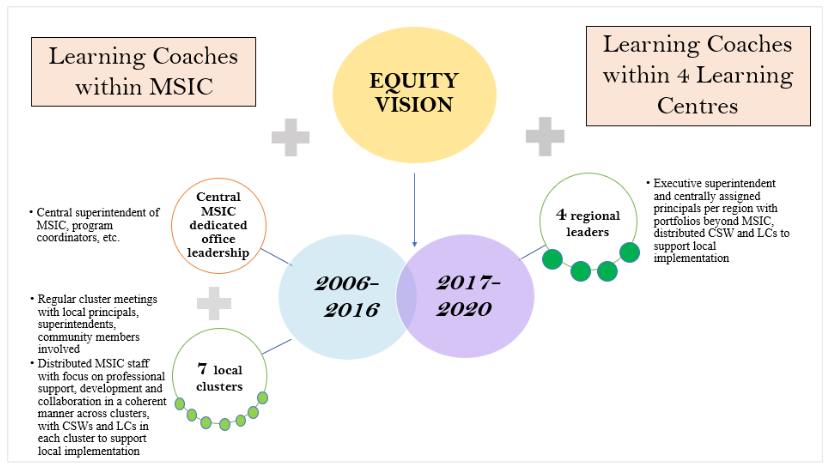Research Highlights

(2023) Bright Minds and Bushy Tails: How education impacts animal-related attitudes in Japanese graduate students
Hokkaido University, Sapporo, Japan
This research (supervised by Johan Edelheim) focused on the influence of animal-induced iyashi (healing) experiences on graduate students’ perceptions of, and empathy towards, non-human animals. Animal cafes in Japan have become integral to the tourism and wellness industries. Rooted in the concept of iyashi, these locals offer mental, emotional, and physical well-being, addressing societal issues like isolation and loneliness. This study examined the impact of a 2-week summer course focused on animal-induced iyashi and wellbeing in the tourism industry on graduate students. Students completed four primary questionnaires related to the use of animals in society, ethical positions, attitudes toward animals, and empathy for animals. Further, this research ethnographically investigated teaching practices in a Japanese graduate classroom, focused on evaluation methods, teaching strategies, student engagement, and the impact of experiential learning. This study aimed to provide insights into the potential educational benefits of iyashi experiences in an educational setting, with implications for both Japanese and North American contexts.
manuscript in preparation

(2022) Record, Recall, Reflect: A Qualitative Examination on the Impact of Compassion Fatigue in Toronto Zoo Staff
The Toronto Zoo, Toronto, ON
This study explored compassion fatigue (CF) amongst Animal Care Professionals (ACPs) at the Toronto Zoo. CF, resulting from prolonged exposure to compassion stress, was examined through a participatory methodology called Photovoice to allow participants share their experiences, capturing nuanced insights often missed by standardized measures. 11 ACPs were given disposable cameras and prompts to capture aspects of their job and emotional experiences. Semi-structured interviews were conducted to delve deeper into participants’ roles, experiences with CF, workplace supports, and personal coping mechanisms. Severe understaffing, inadequate training, competitive hiring, lack of diversity, and insufficient resources contributed to CF in this population. Further, ACPs face physical and emotional exhaustion, leading to health issues and work-related stress. Lack of trust from management, feelings of being unheard, and a sense of isolation also contributed to CF, as well as conflict felt by participants between the zoo’s public image and internal challenges. Recommendations included organizational interventions and mental health training, moving beyond the current focus on physical safety in animal care professions. This study sheds light on the mental health challenges faced by ACPs, emphasizing the need for a holistic approach to well-being.

(2021) Structural supports for learning coaches
Lessons learned from the Model Schools for Inner Cities
This study investigated the experiences of K-12 Learning Coaches (LCs) who transitioned from a centralized Model Schools for Inner Cities (MSIC) Office model to a decentralized Learning Centre model within the Toronto District School Board (TDSB). The study focused on the roles of LCs, structural supports for their work, and the impact of the transition on their effectiveness. The study involved semi-structured focus groups with 10 experienced, mid-level, and novice LCs and semi-structured interviews with 11 MSIC administrative staff members. Qualitative data analyses were supplemented with literature and document reviews related to instructional coaching and relevant school board documents. LCs faced challenges with limited structures for regular peer communication and collaboration, inconsistent professional development opportunities, varying levels of support from school leaders, and a lack of coherent system leadership. Recommendations included addressing the need for regular peer communication and collaboration structures, providing consistent and ongoing professional development opportunities, with a focus on equity, and enhancing support and understanding of LC roles among school leaders. This study suggested that while the Learning Centre model expanded the reach of LCs, it also presented challenges related to support structures and leadership coherence, impacting the effectiveness of their roles.

(2022) Social Learning under Conditions of Uncertainty from Own- and Other-Race Informants (MA Thesis study)
Children’s predominant exposure to own-race adults during the first year of life leads to an increased ability to distinguish own-race compared to other-race faces. Previous research has examined the perceptual effects of this asymmetrical face exposure in infancy and when children start to use group-level characteristics to guide social learning. Little research in young children has investigated the cognitive and social consequences of this ‘other-race effect’. In this Master’s thesis study, 32 White and Black 3-year-olds and their parents participated in one 20-minute session consisting of a “demonstration phase” and a “test phase”. Results revealed that children did not prefer to learn from adults that were 100%, as compared to 55%, accurate. Children also did not prefer to learn from own-race, as compared to other-race, adults. Results, limitations, and future directions are discussed.

(2020) Programs, Services and Supports for Newcomer and Culturally Diverse Families within Model Schools for Inner Cities
This research focused on the perspectives of Toronto District School Board (TDSB) administrators and parents in four MSIC (Model Schools for Inner Cities) schools located in socioeconomically disadvantaged areas in Toronto. The study aimed to gather insights into the MSIC initiative, specifically exploring parents’ experiences with various programs and activities and understanding how schools engage newcomer and culturally diverse families. Participants expressed positive feedback about having essential services like clinics, dental programs, and resources within the school. They also made mention of various programs such as school-based collocated childcare, MSIC Beyond 3:30 after-school program, and Adult ESL classes for parents. There was a recognition of the MSIC Pediatric Health Initiative and nutrition programs, highlighting the importance of supporting access to healthcare and providing meals. Further, there were intentional efforts to ensure the diversity of the school council executive, reflecting the multicultural community. There was also the continued presence of settlement workers and translation supports to help families, especially newcomers, overcome language barriers.
The research emphasized the importance of understanding the unique needs of diverse communities, implementing inclusive practices, and fostering collaboration between schools and families. The MSIC model, with its comprehensive approach to education and community engagement, received positive feedback from both administrators and parents.

(2018) Subliminally-Presented Media Images and their Effect on Appearance Anxiety: A Replication of Chatard et al. (2017) (BA thesis study)
Body dissatisfaction – dysfunctional, harmful beliefs about one’s weight and body shape – is particularly prevalent among women in Westernized, high socioeconomic societies. One possible explanation is that there are a greater proportion of “thin-ideal” images present in such societies, which have led to appearance-related pressure specifically on women. The mechanism by which these types of images affect women’s body dissatisfaction levels is thought to be social comparison – the notion that people have an inherent drive to evaluate themselves and look to other people as standards against which to do this. Many studies have shown an effect whereby social comparisons with media images decrease body dissatisfaction. One thing that is currently unknown is the extent to which these comparisons are automatic, in the sense of being unintentional and relatively mentally effortless. The current Bachelor’s thesis study is a direct replication of a study seeming to show automatic comparisons to subliminally-presented thin-ideal media images. Using the original stimuli, the present study found that subliminal presentations of media images did not automatically affect appearance anxiety. Theoretical implications and directions for further research are discussed.
